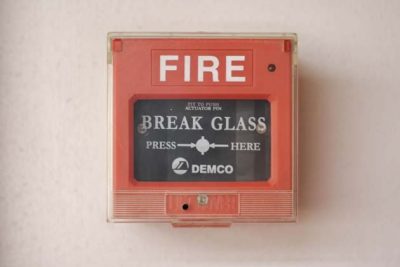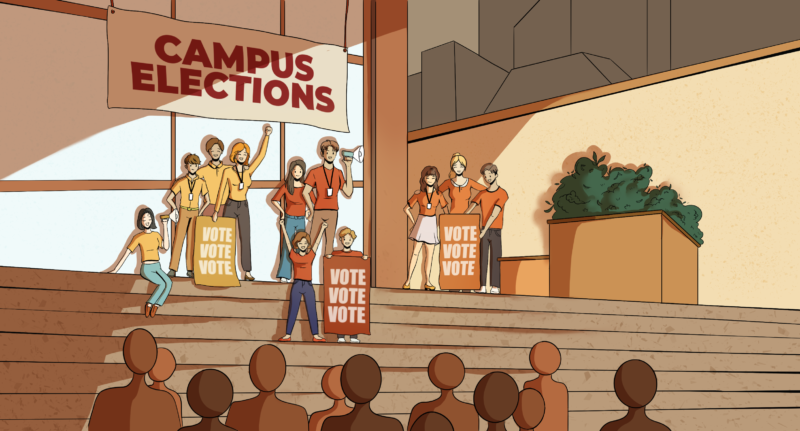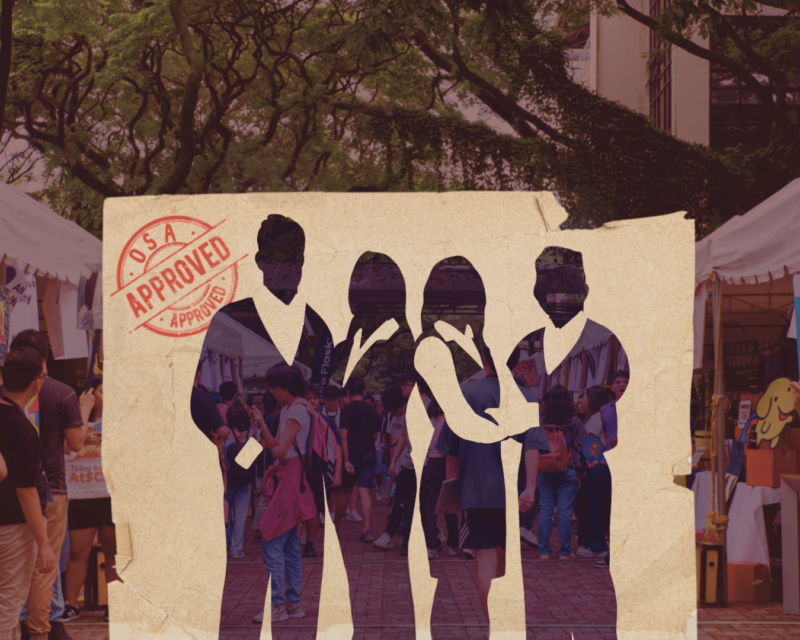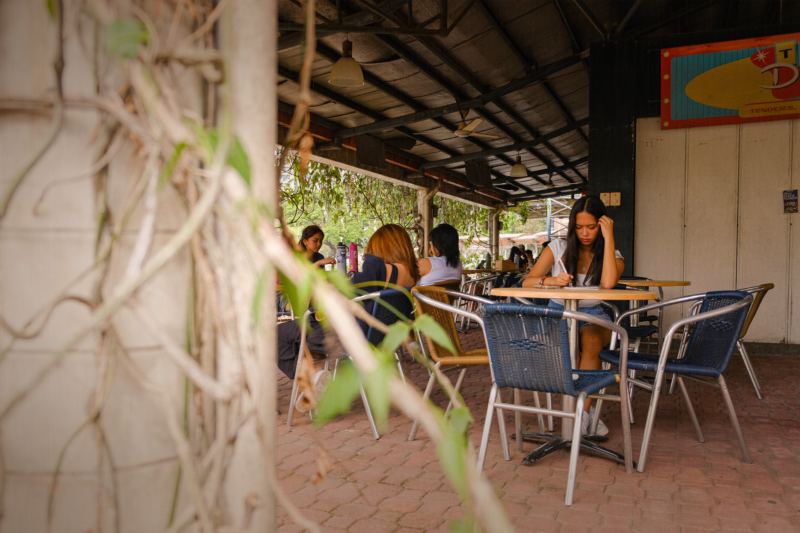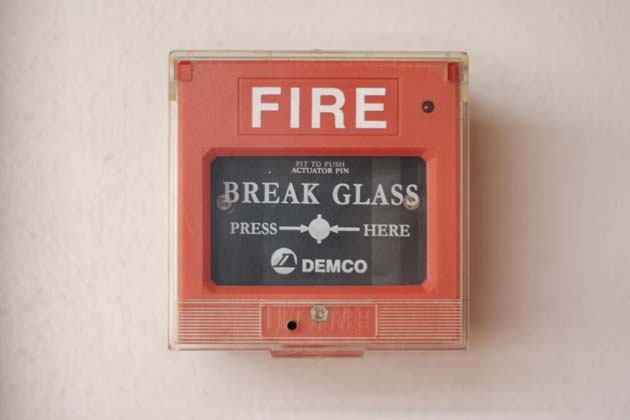
AT THE READY. Through the widespread installation of equipment, the administration has made it a point to ensure the safety of its constituents. Photo by Alexandra L. Huang
Disasters strike without any notice. Society always enters into this guessing game of predicting when and where an emergency may come about and how strong its magnitude would be, but there is something decidedly futile about this whole effort.
Given this fact, society’s best chances lie in the preparedness of its communities for such situations—and Ateneo has not taken things for granted in this regard.
Systems in place
Facilities Management Office Head Arnulfo Batac says that the topography of the Loyola Schools (LS) makes the campus less vulnerable to flooding. Compared to other universities in Metro Manila, it is highly unlikely for Ateneans to ever see their Loyola Heights campus overrun by water. Nevertheless, the downpour caused by the monsoon rains this August did not stop portions of Katipunan Avenue from being drenched in floods up to knee-high levels.
“The back of our campus is the Marikina Valley. For our campus to be flooded would mean flooding the Marikina area by three or four floors [in height]. I hope this will not happen,” says Batac.
Instead, he points to the risk of falling debris from dead tree branches as a greater threat than flooding itself. Such an issue is addressed by the regular pruning carried out by the university’s maintenance contractor. The danger of electrocution is also virtually absent given the fact that the campus’s electrical lines are buried underground.
The probability of an earthquake puts into question the structural strength of the university’s many buildings. The Ateneo, after all, is situated near a natural hazard. The Philippine West Valley fault line rests a few hundred meters east of the campus.
Batac says that inspection is key for new and old buildings alike. The administration has been conducting structural investigations on all the buildings in the university and so far, no major concerns have been noted.
He also emphasizes that new buildings follow the country’s building permit application process. “Structural designs are being reviewed not just by the university’s designer but also by local building officials for compliance to code requirements.”
As for safety in case of fire, Batac believes that the university has made safety a top priority. “The buildings were designed and built following the building code and follow the review and approval process of the local building official.”
Majority of the Ateneo’s structures are in open areas, putting the risk of entrapment at a very low level. Fire exits are also found in many buildings. Various equipment such as fire alarms, smoke detectors, sprinklers and fire extinguishers have been installed in strategic places. Additionally, the electrical wirings of equipment that are prone to short-circuiting are continuously monitored and replaced.
In medias res
However, one must take note that emergency preparedness does not simply mean looking into the physical state of buildings or having reliable emergency equipment. Effective disaster response puts just as much emphasis on the community’s actual response when such situations arise.
During earthquakes, for example, Batac explains that if there is a need to evacuate, the emergency response team would guide everyone out of buildings in an orderly manner and designate everyone to pre-identified evacuation sites. A team assigned to inspect the building would go around checking for any sign of damage before allowing students and building occupants to reenter if they so desire, in case the earthquake seems minor.
Fires, on the other hand, are considered in different degrees of severity. Smoke detectors would light upon sensing smoke. If a fire doesn’t stop and its intensity increases alarmingly, sprinklers would automatically release water. This system works in tandem with the use of fire extinguishers by the university’s emergency personnel.
Should the situation escalate further, the university would call upon the help of external emergency crews. However, one of the challenges faced by such outside emergency teams is the regular traffic congestion along Katipunan Avenue.
For example, if a fire incident happens during peak hours, external response from the Bureau of Fire Protection may come too late. “This is why we are training our own security personnel on how to use not just fire extinguishers but fire hoses as well,” Batac says.
Second home
Emergency preparedness has also become a main priority for students who live inside the campus. Recognizing the fact that dormers live away from the guiding eye of their parents, the administration of the university’s Residence Halls has put into place systems to ensure the safety of the resident students. Such protocols entail the active involvement of the residents themselves.
Ateneo Resident Students Association (ARSA) Vice President for Special Projects Stevenson Yu highlights the role of his organization, especially when disaster looms. “Our main constituents are the dormers, so what we do is to inform everyone [of potential disasters]. We prepare announcements.” The ARSA has also devised a system to check on the state of its constituency every time emergency strikes.
Assistant Director for Facilities in the Residence Halls Elias Pan says that as part of the Residence Hall’s preparedness program, residents have been asked to create their own disaster preparedness kits. Each kit includes the necessities for disaster survival: flashlights, water and biscuits, among others. Helmets and other safety paraphernalia are also included in the items they asked the students to prepare.
Pan says that the buildings of the Residence Halls are of top structural strength. He mentions that geologists and engineers have been consulted in order to ensure that the buildings remain intact even during high-magnitude earthquakes.
The stake of the community
In the LS, aside from the ubiquitous posters on the proper responses to earthquakes and fires, actual drills have been implemented. “They are simulations of an actual response during emergencies; hence, everyone is encouraged to participate and seriously observe procedures,” says Batac. The drills are not just practice for enacting guidelines, but are also a way of assessing the response of the community.
Emergency teams conduct an assessment of the drills and take note of items to improve on every year. “We exert effort to improve participation from the community, particularly the students,” Batac says.
An example of an initiative to get students involved is the case wherein alarms go off unannounced. This realistic simulation urges the student body to respond more quickly—a response that should be natural in the event of a real disaster.
Consolidation of units
Disaster preparedness follows a definite chain of command in the Ateneo, thus also allowing for efficiency in the management of disaster response. Such is the case with the consolidation of efforts through the Ateneo’s Disaster Response and Management (Dream) Team.
Sanggunian President Gio Alejo says, “[The Dream Team] was started right after the Ondoy operations, [as] before [it] was institutionalized, we only had task forces and all Ateneo units weren’t coordinated.”
Pan notes that the preparedness for disaster response has been heightened. Before, each unit of the Ateneo was left to operate on its own; there was no centralization of disaster response. For Pan, this was more a disorderly process than a strategic preparation.
The Dream Team, which primarily manages the community’s response to disasters that arise, is composed of different units from the Ateneo community. There are representatives from the administration units, from government agencies and also from the various student organizations.
“I can say that compared to the previous years, we were much more prepared this time,” says Alejo. “There were improvements. In fact, a lot of other student leaders from other schools are asking me if they can also follow the same system next time.”
The disaster response system implemented by the Ateneo has proven to be effective in the Habagat Operations earlier this August. It now therefore seems essential for the administration and the Sanggunian, together with the student body, to build upon the success and positive feedback of such a system, so that an even better disaster response system may be utilized in the future.
- WALK THIS WAY. Structures in the university adhere to evacuation plans unique to their architectural designs. Photo by Alexandra L. Huang
- Photo by Alexandra L. Huang
- AT THE READY. Through the widespread installation of equipment, the administration has made it a point to ensure the safety of its constituents. Photo by Alexandra L. Huang
- Photo by Alexandra L. Huang



